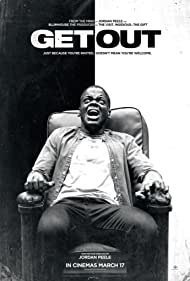But Call Me Back: Horror Film Class
I’m taking this class about horror films and the gendered body. I am a feminist who has only taken one queer theory course, but who has always considered myself to be pro-female, pro-queer. I still feel that I have much to learn, particularly about how race and gender identity play into bias and stereotypes.
A handful of my favorite horror films:
Get Out
Carrie
The Shining
Dolores Claiborne
Misery
Let’s take a quick look at how feminist or non-feminist a few of these films are.
Get Out is a film that examines a terrifying “what-if” scenario. What if a white man discovered how to embed his consciousness into another being’s body? And what if that man was part of an entire white community who then decided it would be a good idea to seek out black bodies and inhabit them? That’s the premise of Get Out, and the central character is a black man dating a white woman who has essentially ensnared him to become another body donor for the community. I would say that this film is neither feminist nor non-feminist, since its concerns are around the realm of white privilege, white supremacy, and the danger that black people face in simply existing. The main white female character in the film is portrayed as a predator; she uses her attractiveness in order to trap black victims.Carrie is a classic horror films starring a young Sissy Spacek, one of my favorit
e actors (there was also a more recent remake in 2002, but definitely watch the first one if only to see a young John Travolta). This movie, based off the Stephen King book, would fit right in with the idea of the monstrous mother. In this case, Carrie White’s mother is a strange, super religious woman who forces Carrie to pray, to be ashamed and to dress in dumpy, unattractive clothing. She does nothing to prepare her daughter for adolescence, including not letting her know about menustration works. As Carrie gets her period in the locker room, she also begins to have the ability to unleash telekinesis. She ultimately uses this power to unleash her anger at the high school students who have tormented her, and to crucify her mother with kitchen utensils. Both Carrie and her mother end up dead, so the female body does not survive in this example.
The Shining is another Stephen King book made into film. King did not like the outcome of the film. I read the book and saw the movie, and I can see why he didn't feel it accurately represented his book. For one, the movie kills off the man black character, for some reason. I keep imagining it was an editing error, because in the book, Dick Halloran saves Danny Torrance in the end, whereas in the movie, Dick Halloran takes an ax in the face and dies, thereby pretty much negating his entire function in the movie. The other fail of the film is the ending. In the movie, Jack Torrance (played by creepy, slurry, bad daddy of all time Jack NicholsonI) chases Danny in the snow and ends up freezing to death. In the book, the dad realizes that he has neglected the Overlook's furnance, a recurring theme. In both the book and the movie, it's the hotel itself that is the haunted entity, so it's destruction in the end makes sense. Lastly, the character of the mom, Wendy as played by Shelly Duvall, is a drippy victim--she does nothing to save her kid or herself. In the book, I remember her as much more active; much more willing to cut her ties and leave Jack. The winter at the Overlook was to be their last chance as a married couple. However, we do also know that Wendy has stayed with Jack even after her broke their son's arm, so she is most certainly caught in an abusive situation and does not really have a plan. The people who act in the book and the movie are the male characters; the female characters are either powerless or dead.



Comments